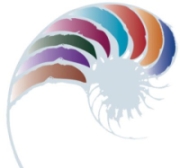<- Homepage: Freshwater ecology Taupō

Key concepts
adaptations, Bay of Plenty, changing values, citizenship, community involvement, data gathering, environmental impacts, fish, fisheries, food webs, fresh water environments, future focus, government, habitat, human impacts, innovation, insects, invertebrates, lakes, land management, land use, life cycle, local iwi, managing resources, marketing, modelling, monitoring change, native species, people and the environment, perspectives, publicity, risk management, risks, rivers, scientific research, social and environmental impacts, statistics, survey, sustainability, Taupō, technological change, technological innovation, technology, tourism, trout, values, viewpoints, water, water cycle, water quality
The New Zealand Curriculum - NZC
Key Competencies
LEARNZ virtual field trips contribute to the development of all five key competencies:
| Key competencies | Examples of related field trip components |
| Thinking | Constructing questions to put to experts during Web conferences. |
| Using language, symbols and texts | Interpreting and making meaning of a variety of language and symbols in the Background Pages and throughout the web site. |
| Managing self | Numerous content-related Activities provide students with chances to engage with the material and create their own interpretation of the content. |
| Relating to others | Videos connect students with a range of expert opinions. Students listen actively when seeking answers to video questions. |
| Participating and contributing | LEARNZ Virtual Field Trips are an ideal medium for group-based topic inquiry. They also enable students to transfer new learning into the context of their own communities where they are encouraged to take action. |
(See page 12-13 NZC 2007)
Values
The Sustainable Wai field trip encourages, models and explores these values:
- innovation, inquiry and curiosity
- ecological sustainability
- community and participation
(see page 10 NZC 2007).
E-learning and pedagogy
The Sustainable Wai field trip directly involves learning that is supported by information and communication technology (ICT).
In particular, the trip will:
- Assist the making of connections by enabling students to enter and explore new learning environments, overcoming barriers of distance and time.
- Facilitate shared learning by enabling students to join or create communities of learners that extend well beyond the classroom.
- Enhance opportunities to learn by offering students virtual experiences and tools that save them time, allowing them to take their learning further (Page 36 NZC 2007).
Science
| Strand | Achievement Aims | Background Pages |
|
Nature of Science |
Participating and contributing
Communicating in science
|
|
|
Living World |
Life Processes
Ecology
|
|
|
Planet Earth and Beyond |
Interacting systems
|
|
Social Science
| Strand | Achievement Aims | Related background pages |
|
Place and Environment |
|
|
Health and Physical Education
| Strand | Achievement Aims | Related Background Pages |
|
Healthy communities and environments - D |
D2 Community Resources Level 2: Share ideas and beliefs about ways in which the environment contributes to well-being and work with other people to make improvements. Level 3: Identify how health care and physical activity practices are influenced by community and environmental factors. Level 4: Access a range of health care agencies, recreational resources, and sporting resources (related to freshwater) and evaluate the contribution made by each to the well-being of community members. |
|
English
The selected processes and strategies indicators used in the table below are from Level three of the NZC, but aim to cover indicators from levels two to four.
| Strand | Processes and strategies indicators | Example of related field trip component |
|
Speaking, Writing and Presenting |
|
|
|
Listening, Reading and Viewing |
|
|










